PMI manufacturing dropped to 54.5 in August, down from 55.3 and missed expectation of 55.1. PMI services dropped to 55.2, down from 56.0 and missed expectation of 55.9. PMI composite dropped to 55.0, down from 55.7, hit a 4-month low.
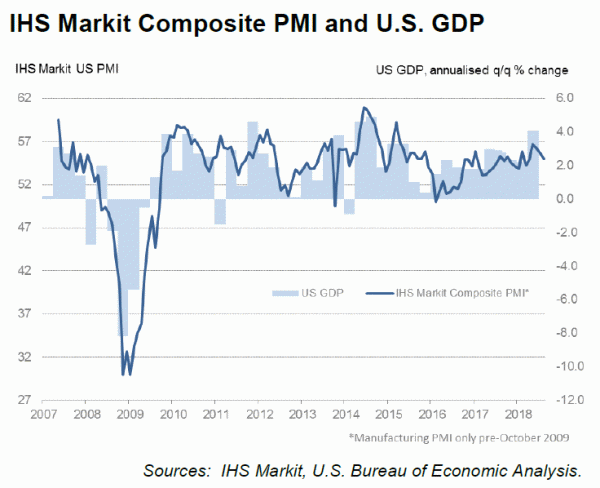
Commenting on the flash PMI data, Chris Williamson, Chief Business Economist at IHS Markit said:
“The US economy lost a little pace in August, according to the flash PMI, but continued to grow at a solid rate. The PMI is indicative of the economy growing at an annualised rate of roughly 2.5%, down from a 3.0% indicated rate in July.
“Output, new orders and employment growth all moderated, adding to signs that the economy has cooled after strong growth in the second quarter. Backlogs of uncompleted work, a key indicator of future output and hiring, meanwhile fell for the first time for over a year, suggesting the slowing trend could persist into the fall.
“Manufacturing has led the slowdown, though the service sector has also come off the boil compared to the second quarter highs.
“Some of the slowdown can be attributed to supply shortages: jobs growth in manufacturing and services is being restricted by a lack of available workers, while factories are also constrained by a lack of raw materials, sometimes blamed on ‘panic-buying’ of safety stocks as well as a lack of transportation to ship goods around.
“However, the survey also found increased cases of companies reporting the need to cut costs, in part reflecting the recent steep rise in raw material prices, often linked to tariffs and shortage-related price hikes. Fortunately, input price inflation eased for a third successive month and average prices charged for goods and services rose at a slower rate than July’s post-recession high.”
Full release here




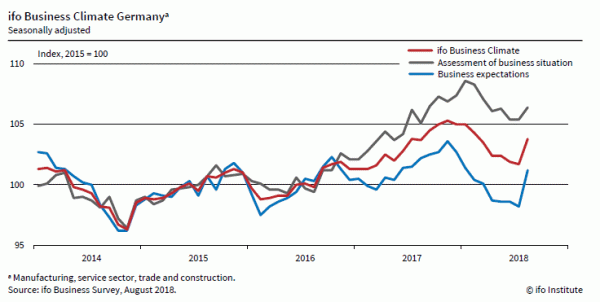
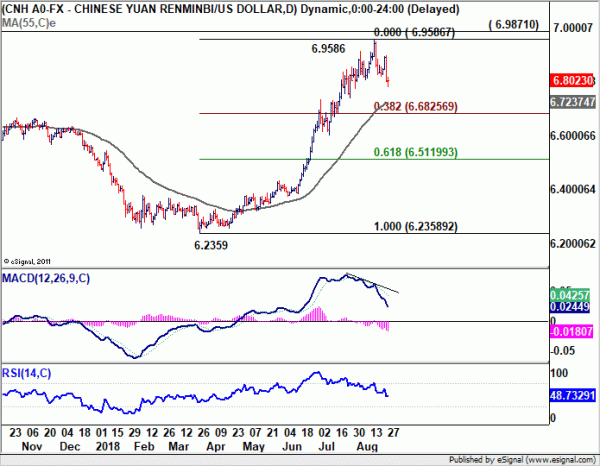
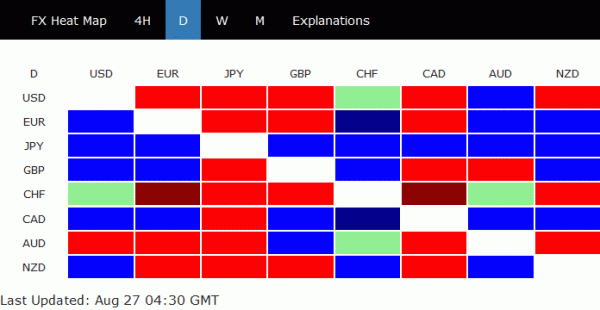
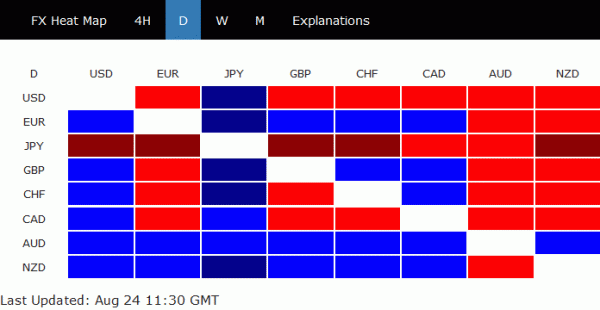
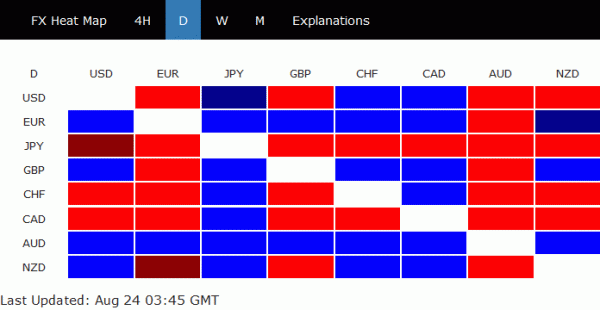
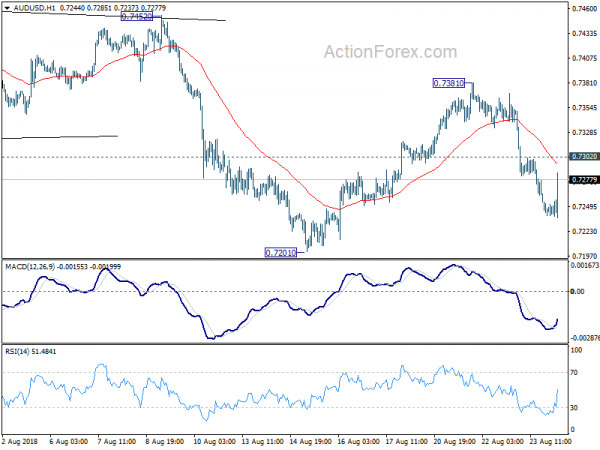
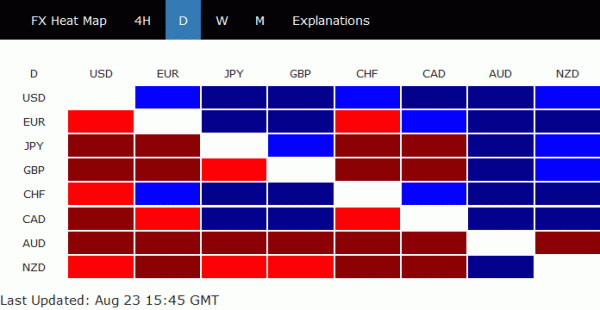
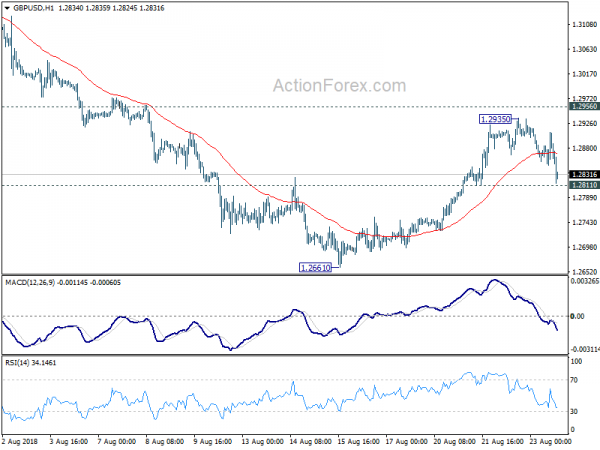
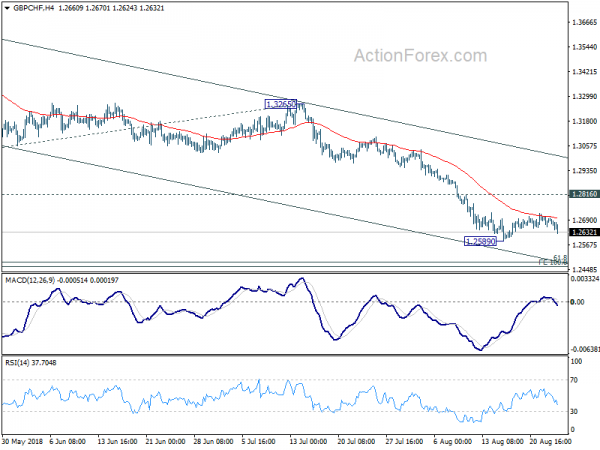
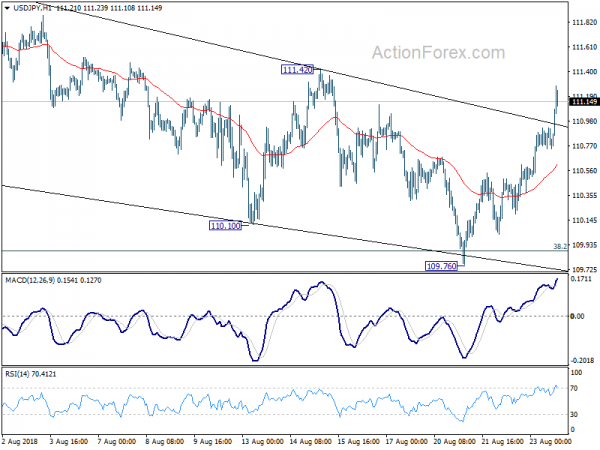

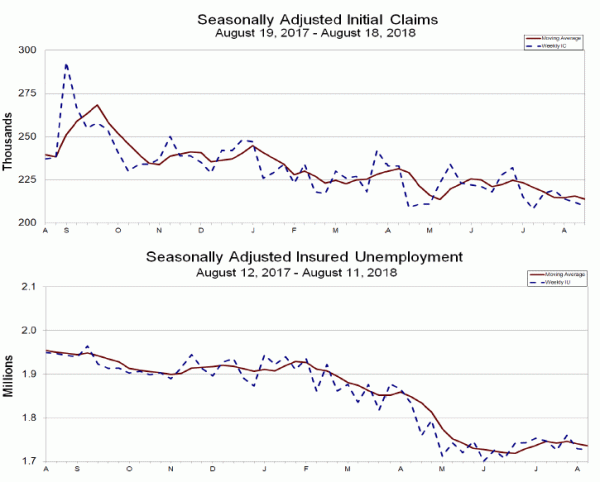
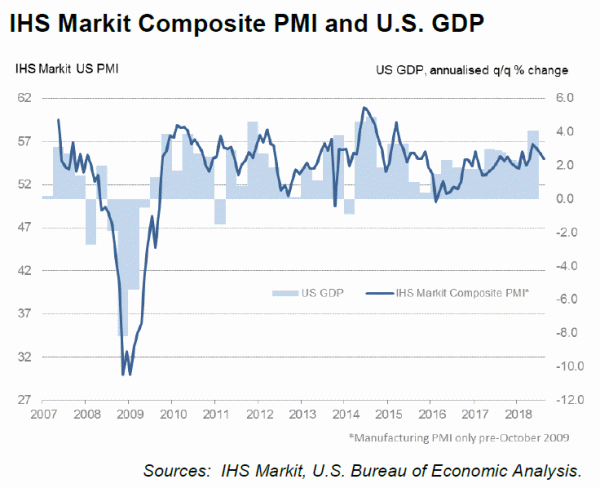

Nikkei eyes 23050 after strong rally, more upside ahead
Strong risk appetite is the main theme in the financial markets today even though it’s not quite reflected in the forex markets. Strength in Nikkei and Yen on the same day is relatively unusual. But that could be a reflection of reactions to both Fed chair Jerome Powell’s speech, as well as Prime Minister Shinzo Abe’s announcement to seek power extension. Also, Japanese markets remain rather immune from global trade war threat.
Anyway, Nikkei’s rally since last week maintains near term bullishness. That is the development is in line with the view that price actions from 23050.39 are merely a sideway consolidation pattern. And the rally from 20347.49 is not over. The focus is now back on 23050.39 resistance. Break will confirm resumption of rally from 20347.49 and target 61.8% projection of 20347 to 23050.39 from 21851.32 at 23521.71 first. Break will likely send the index through 24129.34 to 100% projection at 24554.22. This bullish case is favored as long as 21851.32 support holds.